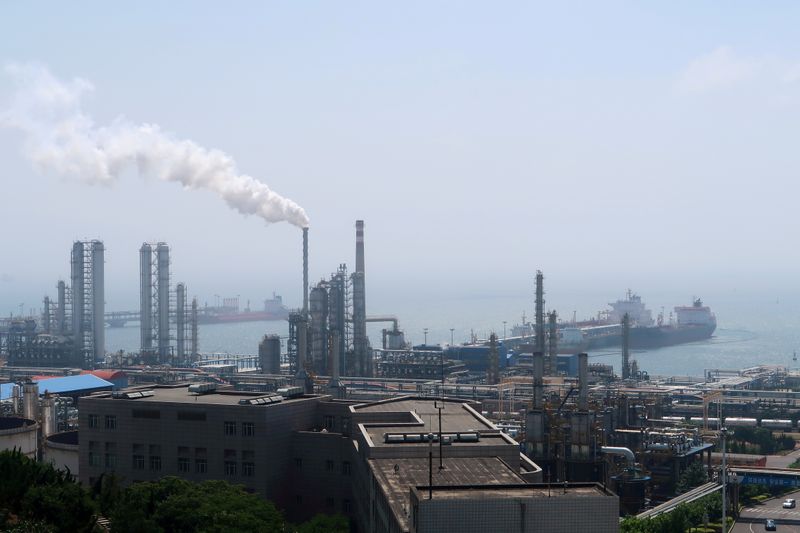By Chen Aizhu and Muyu Xu
SINGAPORE/BEIJING (Reuters) - China's daily crude throuhgput last month fell to the lowest since May 2020 as independent plants slashed production amid a tighter quotas, high inventories and weakening profits.
Last month's processing volumes were 59.06 million tonnes, or 13.9 million barrels per day (bpd), 0.9% below the same month of 2020, data from the National Bureau of Statistics (NBS) showed on Monday.
That was the first year-on-year decline since March last year when coronavirus hammered Chinese fuel demand, and the July level was down 6% from off June's record at 14.8 million bpd.
Total throughput during the first seven months of 2021 reached 412.41 million tonnes, up 8.9% from a year earlier, largely reflecting the economy's recovery from the initial impact of the coronavirus pandemic.
Volumes fell in July as independent plants scaled back processing in the face of tightening quotas as Beijing stepped up scrutiny of irregular trading of the permits.
“Independent plants were facing tighter feedstock supplies and weakening margins. Some took to overhauls, other cut processing," said Zhou Mi, analyst at Chinese commodities consultancy JLC.
These plants, sometimes known as teapots, operated crude processing capacity at 64.4% in July, down almost 14 percentage points from July 2020, according to JLC.
Throughput could take a further hit this month as a resurgence of coronavirus case in more than a dozen provinces is set to curb mobility.
"It's going to dampen refined fuel sales, we're trimming August throughput by about 3% from previous months," said an official with a north China-based refinery.
The NBS data also showed China's crude oil output in July at 16.87 million tonnes, up 2.5% from year-earlier level. Over the first seven this year, output rose 2.4% to 116.21 million tonnes.

Natural gas output last month gained 9.8% from a year earlier to 15.8 billion cubic metres (bcm), while January to July production expanded 10.7% to 120.2 bcm.
(tonne = 7.3 barrels for crude conversion)